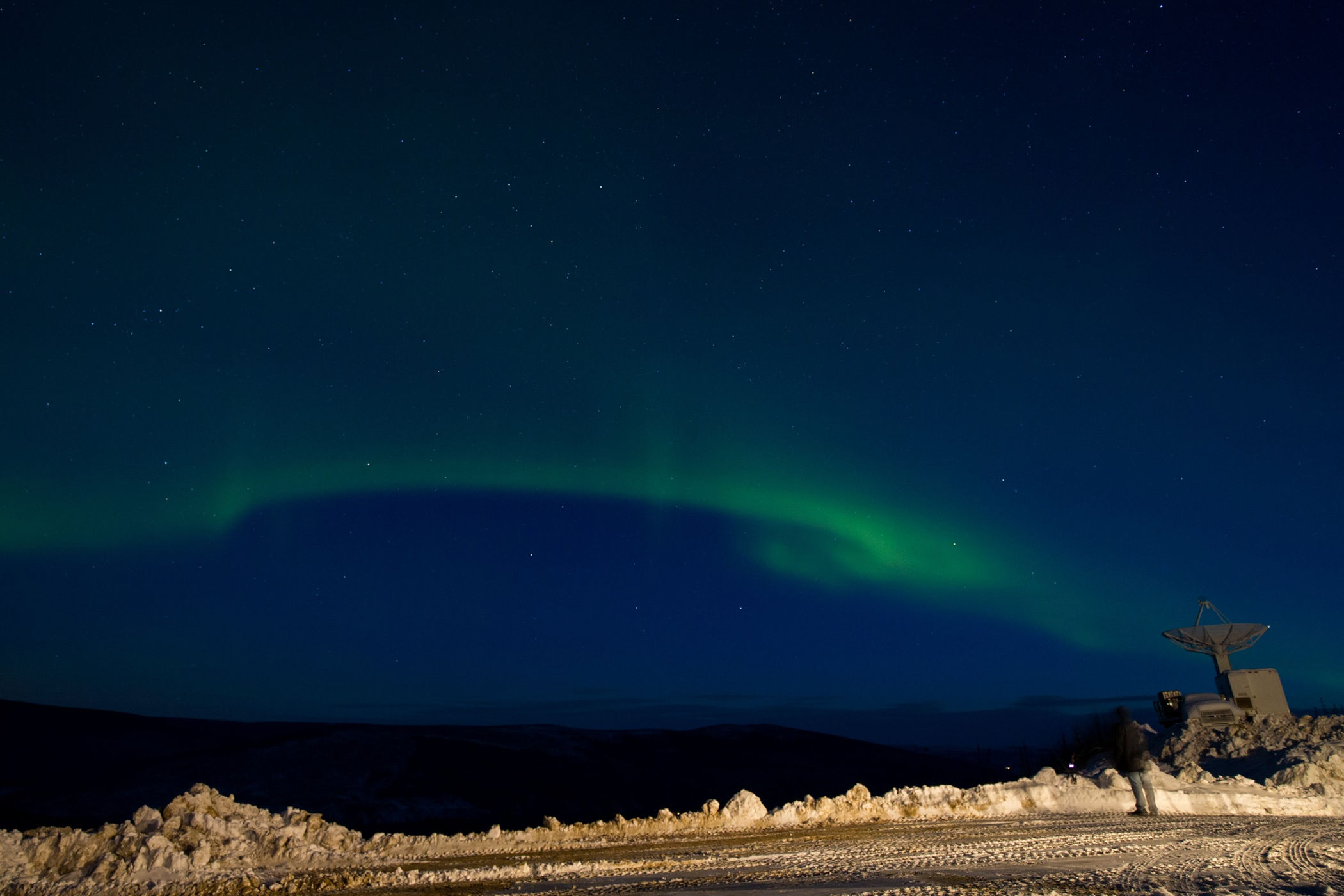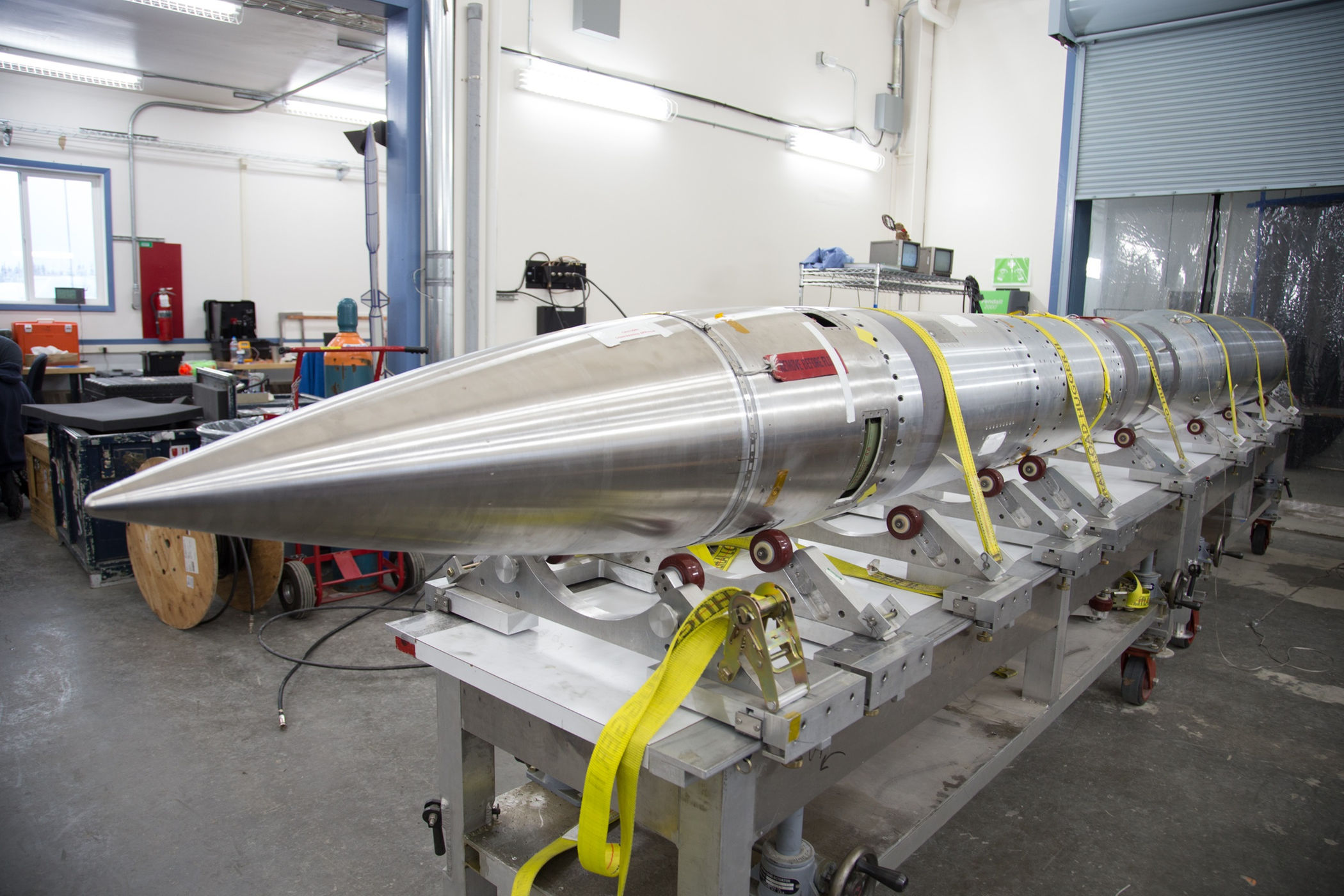NASA's Aurora-Watching Rocket Campaign Blasts Off

NASA is known for its awe-inspiring missions to explore the far reaches of the cosmos, but this month, the space agency is preparing for very different kinds of rocket launches: ones to explore the mysteries of Earth's auroras.
Over three missions and five launches, NASA will launch rockets into the Earth's upper atmosphere to help scientists better understand the planet's magnetic environment. From auroras to solar winds, the rockets will examine what's known as near-Earth space, NASA researchers said. The missions will not only reveal more about humanity's home planet, but could also help researchers broaden their understanding of the low-Earth orbit environment in which astronauts and spacecraft must travel, NASA said.
The first mission will focus on nitric oxide, NASA said. The launch window of this Polar Night Nitric Oxide or PolarNOx mission extends from Jan. 19 to Jan. 31. The rockets from this launch will study Earth's atmosphere in the polar region, measuring the nitric oxide that forms during displays of the northern lights. [Aurora Photos: See Breathtaking Views of the Northern Lights]
"The aurora creates nitric oxide, but in the polar night, there is no significant process for destroying the nitric oxide," Scott Bailey, the mission's principal investigator and an electrical and computer engineering professor at Virginia Tech, said in a statement. "We believe it builds up to large concentrations. The purpose of our rocket is to measure the abundance and altitude of peak abundance for the nitric oxide."

This mission will actually avoid aurora activity, as the rocket's primary instrument is an ultraviolet spectrograph pointed at a star on the horizon, Bailey said. Nitric oxide reduces starlight, and therefore the light measurements are used to build a profile of the nitric oxide levels, he said.
The rest of the missions will target auroras, with a focus on studying the interactions among the solar wind, the magnetosphere, Earth's upper atmosphere and the resulting aurora.
Auroras occur when the energy from solar wind, stored in the magnetosphere, is released, NASA scientists said. The charged particles of solar wind charge the upper atmosphere's gases. As the gases release this gained energy, they also emit photons (light particles) of specific wavelengths, creating the different colors seen in auroras.
Get the Space.com Newsletter
Breaking space news, the latest updates on rocket launches, skywatching events and more!
For the project's second mission, dubbed "Neutral Jets in Auroral Arcs," two rockets will launch nearly simultaneously at different altitudes to measure the aurora's profile. The experiment will investigate how the ionosphere's electrical fields drive the aurora's structure, said Rob Pfaff, principal investigator for the mission and a scientist at NASA's Goddard Space Flight Center in Greenbelt, Maryland.
The final mission will also require two rockets, launching into two different types of auroras.
"The visible light produced in the atmosphere as aurora is the last step of a chain of processes connecting the solar wind to the atmosphere," said Kristina Lynch, principal investigator of this mission and an experimental physicist at Dartmouth College in New Hampshire. "We are seeking to understand what structure in these visible signatures can tell us about the electrodynamics of processes higher up."
The launch window for the second and third missions extends from Feb. 13 to March 3, with rockets for all three missions launching from the Poker Flat Research Range in Alaska.
Original article on Live Science.
Join our Space Forums to keep talking space on the latest missions, night sky and more! And if you have a news tip, correction or comment, let us know at: community@space.com.

Kacey Deamer is a journalist for Live Science, covering planet earth and innovation. She has previously reported for Mother Jones, the Reporter's Committee for Freedom of the Press, Neon Tommy and more. After completing her undergraduate degree in journalism and environmental studies at Ithaca College, Kacey pursued her master's in Specialized Journalism: Climate Change at USC Annenberg. Follow Kacey on Twitter.










